Step-by-step instructions for planting petiole celery for seedlings
Planting petiole celery as seedlings is the most reliable way to obtain large, juicy and tasty stems. The long growing season dictates its own rules: in the climatic conditions of Russia it is difficult to grow a rich harvest without first germinating seeds and preparing seedlings at home. Even in a warm southern climate, it is not always possible to wait for ripe petioles before frost sets in.
In this material we will talk about the nuances of growing seedlings, caring for them and the rules of transfer into open ground.
Features of petiole celery
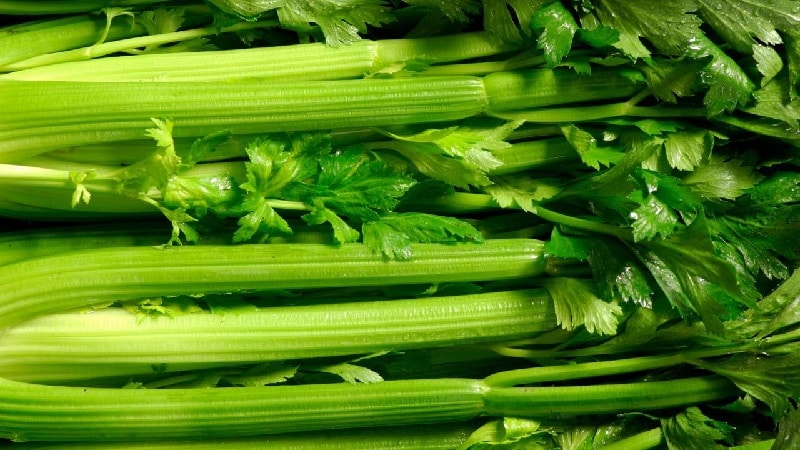
Petiole celery is a biennial plant from the Apiaceae family. Culture originating from the Mediterranean. Thick and juicy stems of green, red, pink and white are used for food. The most valued are the bleached petioles, which have a sweetish taste without bitterness. Celery varieties with red petioles are resistant to frost down to –5°C, so the harvest is harvested until late autumn.
In the first year, the plant forms thick stems about 1 m high and greenery. In the second year it produces arrows with peduncles and seeds.
The growing season of petiole celery is 80–180 days, depending on the variety.
Celery petioles are rich in easily digestible carbohydrates, vitamins, mineral salts, trace elements, and aromatic compounds. Regular use of the product has a beneficial effect on metabolism And nervous system. The petioles are used fresh, stewed, boiled in salads, side dishes, soups and as an independent dish. In China, desserts are made from them.
Time for sowing seedlings
When choosing the timing of sowing petiole celery for seedlings, experienced gardeners focus on the phases of the moon.
Optimal days for sowing according to the Lunar calendar in 2020:
- in February: 10-15, 17-20, 24, 25;
- in March: 3-6, 17, 18, 22, 27-30;
- in April: 5-7, 10-14, 18, 19, 23, 25-29;
- in May: 2-6, 15-17, 24-26, 30-31.
Considering the variety of climatic zones in our country, when growing stem celery seedlings, it is equally important to take into account the weather conditions of each individual region:
- in the north, sowing work is carried out in the last ten days of March - the first ten days of April;
- in the regions of the middle zone - all of March;
- in the south - from mid-February to the first ten days of March.
Preparing for landing
When growing petiole celery seedlings, germination of seeds, preparation of soil mixture and containers, and creation of favorable indoor conditions play an important role.
Seeds
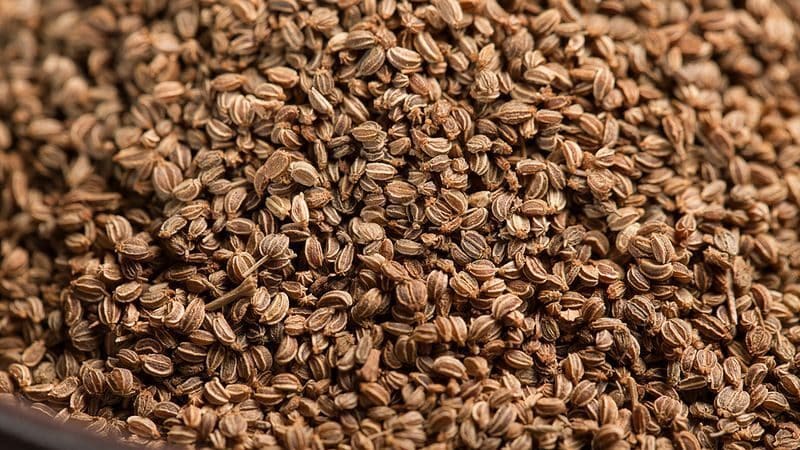
The seed shell contains a large amount of essential oils, which reduce the germination rate. Therefore, it is preferable to grow petiole celery through seedlings. Direct sowing in open ground is carried out with full confidence in the quality of the seed material and its freshness. It happens that manufacturers provide inaccurate information about the expiration date, and the buyer runs the risk of purchasing expired seeds that will not sprout.
To be on the safe side, it is recommended to germinate the seeds: soak in warm water for 3-4 hours, wrap in a damp cloth and leave at room temperature until white seedlings appear.Sprouted material is sown in areas with early spring and long summer. In such conditions, there is a high probability of getting early shoots and harvesting before the cold weather.
Wet sawdust is used to germinate seeds. A clean glass or plastic tray is filled with wet sawdust, and seeds mixed with river sand are placed on top. Without closing the lid, place the container in a warm, illuminated place. The sawdust is periodically sprayed with a spray bottle to maintain constant humidity, waiting for sprouts to appear.
There is another way to prepare seed material - stratification. The seeds are placed in a damp cloth and left at room temperature for a week. Then the fabric bundle is placed in the refrigerator for 2 weeks. In this way, conditions favorable for germination are created, close to natural ones: the grains overwinter in the ground and sprout together in the spring.
Seeds from well-known manufacturers are disinfected before packaging. Seeds collected by hand must be disinfected in a solution of potassium permanganate or Fitosporin.
Advice. To increase the percentage of germination, soak the seeds in a growth stimulator - “Epin” or “Zircon”.
The soil
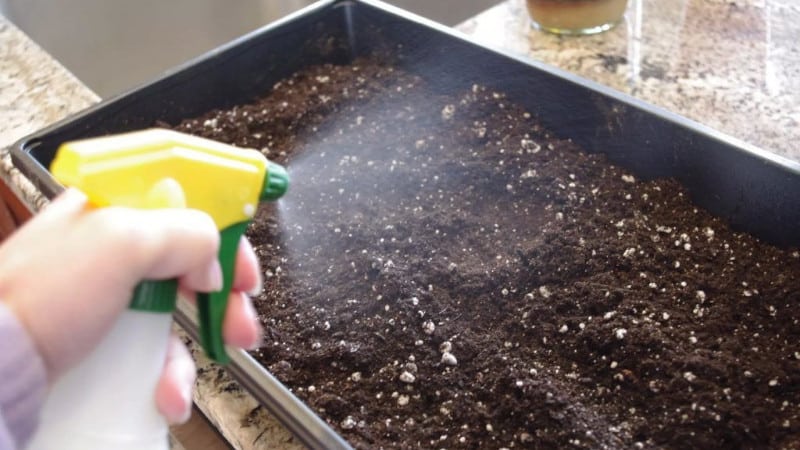
To grow celery seedlings, use substrate from gardening stores or prepare the soil yourself from:
- equal parts of turf, sand, peat, sawdust and ground eggshells;
- peat, vermiculite and humus (3:1:1);
- peat, humus and wood ash (3:1:1);
- vermicompost and sand in equal proportions.
Before use, the soil is disinfected in an oven, microwave, or double boiler.However, when heated, not only pathogenic, but also beneficial microflora dies, so farmers recommend watering the substrate with a dark solution of potassium permanganate, “Baikal-M” or “Siyanie”.
To increase nutritional value, for every 10 kg of soil mixture, add 200 g of wood ash and 20 g of urea.
Container and place of cultivation
To grow petiole celery seedlings, plastic boxes, containers, trays, and tetrapacks are used.. Grown seedlings are planted in disposable glasses with a volume of 300 ml. Holes are made in the bottom to drain excess water.
Before use, the container is washed and disinfected with a solution of copper sulfate or potassium permanganate.
The ideal place to grow celery seedlings is a sunny windowsill. The duration of daylight should be at least 12 hours, optimally 16 hours. If there is a lack of sunlight, the seedlings are illuminated with a phytolamp.
How to properly plant petiole celery for seedlings
The prepared soil is watered generously with water at room temperature and placed in boxes. Use a toothpick to form grooves 5 mm deep, water with a syringe and carefully lay out the sprouted seeds, being careful not to damage the sprouts. Water again and stretch plastic wrap over the top.
Some gardeners use snow instead of water. A layer of clean snow is laid on the substrate, and seeds are distributed on top. Melt water will “pull” the seeds along with it. As a result, natural conditions are created that are favorable for the growth of celery seedlings.
2 weeks after sowing, the seedlings are treated with Trichodermin solution to prevent fungal diseases.
Sowing seeds into a snail
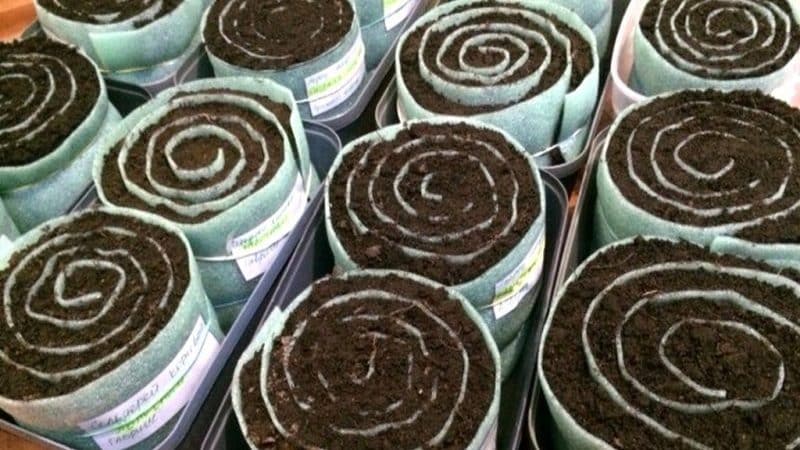
Agronomists recommend adopting a relatively new but proven method of growing petiole celery seedlings in snails. This method saves space on the windowsill - the snails are placed vertically in wide pots or wide plastic trays with low sides.
Thick cellophane or a backing for laying laminate is suitable for curling snails. Elastic bands are used for fastening. A 10 cm wide tape is cut out of the substrate or cellophane, a centimeter layer of substrate 20 cm long is poured on top. The sprouted seeds are carefully laid out with tweezers at a distance of 1-2 cm, retreating 2 cm from the edge of the film.
The tape is carefully rolled up, then a layer of soil is poured over the remaining area and the seeds are placed again. The snail is rolled up to the end, secured with rubber bands and placed in trays or pots with the seeds facing up. A plastic bag is pulled over the top.
Further care
Until the sprouts appear, the container with seedlings is kept under a film cover in a dark room. Prepared seeds germinate in 14-15 days at a temperature of +20...+22°C. After the seedlings appear, the film is removed and the containers are placed on the windowsill on the sunny side of the house.
After the appearance of cotyledon leaves, the air temperature is reduced to +12°C, and after 10 days it is raised again to +20...+25°C. This is necessary to prevent the seedlings from stretching.
Seedlings with 2-3 true leaves are planted in a separate container, choosing strong and healthy specimens. Seedlings are dug up with a teaspoon or a peg. The main root is pinched to ensure sufficient nutrition for the above-ground part of the plant and the formation of a network of lateral roots. This procedure is called diving.
Charcoal is placed at the bottom of the container for drainage, depressions of 2-2.5 cm are formed in the soil and watered with a syringe. Each seedling is planted in a separate glass. A soil mixture or peat is poured on top, leaving the cotyledon leaves above the surface. The seedlings are watered with warm water mixed with Gumi fertilizer (6 drops per 1 liter).
Attention! Cold water is not used for irrigation. This leads to rotting of the root system and the development of blackleg disease.
After picking, the seedlings are kept in partial shade for 2-3 days, then taken to a lighted place. Favorable conditions for the development of petiole celery seedlings are daylight hours of 12-16 hours and air temperature +18...+22°C.
Caring for seedlings consists of several procedures:
- maintaining optimal soil moisture;
- watering through a sieve at the root;
- preventive treatment with “Fitosporin”;
- loosening the soil to improve root aeration;
- feeding every 14 days with chicken droppings (2 tsp per 5 liters of water);
- feeding every 10 days with “Nitrophoska” or “Superphosphate” (2 tsp per 5 l);
- hardening of seedlings in the fresh air 2-3 weeks before transferring them to open ground.
Planting finished seedlings in the ground
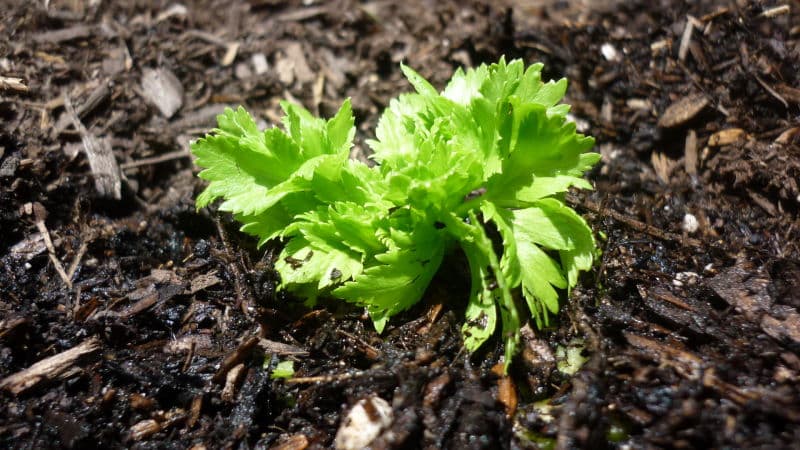
When to plant seedlings in open ground? The transfer of petiole celery begins as soon as the plant height reaches 20 cm. The best period for transplantation is the end of April or the beginning of May, depending on the region.
Attention! Optimal conditions for the growth and development of the crop are moderate air temperature and sufficient soil moisture.
Light sandy loam soil rich in organic matter and open sunny areas are suitable for cultivation. The acidity of the soil should be neutral (pH=6.8-7) or slightly acidic (pH=5.6-6.0). Celery does not grow well in acidic soils.To deoxidize, dolomite flour, chalk, slaked lime, and wood ash are added to the soil.
Plantings are located where cabbage, potatoes, zucchini, and cucumbers used to grow. In the fall, deep plowing is carried out, the soil is fertilized with humus, fermented food waste, and compost.
In the spring, the area is plowed again and loosened, and the soil is spilled with a strong solution of potassium permanganate or copper sulfate. Furrows are formed at a depth of 25-30 cm with an interval of 40 cm. The row spacing is 60 cm. Wood ash is placed at the bottom, and a layer of soil is poured on top so that the level of the furrows is 8 cm below ground level.
The seedlings are carefully removed from the glasses and placed into the soil together with a lump of earth. Then the beds are mulched with sawdust or straw.
Planting is carried out on a cloudy day. When planting early at the end of April, celery is covered with black agrofibre to protect it from frost.
Features of cultivation
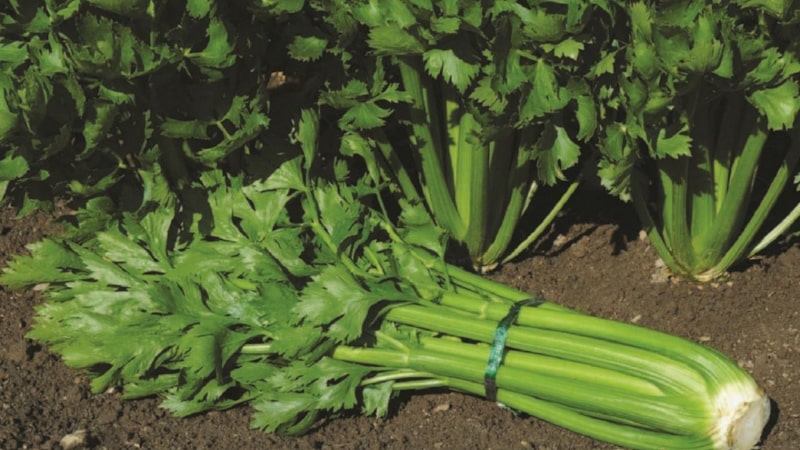
Rules for successful agricultural technology of petiole celery:
- Petiole celery loves moisture and when there is a lack of it, it begins to dry out. The stems become stiff. The optimal watering regime is 3 times a week.
- Loosening and weeding are carried out as necessary, preventing weeds from taking root. Care procedures provide additional air flow to the root system. The formation of a dense earthen crust leads to stunted plant growth; as a result, the petioles are formed hollow inside and tasteless.
- Side shoots are removed as they grow. How do you know which ones to remove and which ones to keep? Yellow, unkempt-looking thin stems are removed immediately, thick and strong ones are left.
- Petiole celery is fed weekly, alternating potassium and nitrogen fertilizers: “Superphosphate” or “Nitrophoska” (25 g per 10 l), nettle infusion, vermicompost, biological product “Shine”. Pale and yellowed leaves are fed with a urea solution (10 g per 2 liters of water).
- 2 weeks before harvesting, the petioles are bleached to obtain a delicate taste without bitterness - the stems are tied into bunches and wrapped in paper.
Read also:
A step-by-step guide to planting celery root seedlings.
Step-by-step instructions: how to grow celery from seeds at home.
What are the features of apple celery and why it is worth growing.
Conclusion
Growing petiole celery through seedlings is a promising way to obtain a rich harvest. The technology for germinating seeds and proper care of seedlings includes sufficient watering, fertilizing with potassium and nitrogen fertilizers, and creating a temperature and light regime during the day.
A special role is played by the choice of soil, careful planting of seedlings and further care: watering, mulching the beds, weeding and loosening, fertilizing, bleaching petioles and removing side stems. Integrated agrotechnical measures help achieve maximum results.